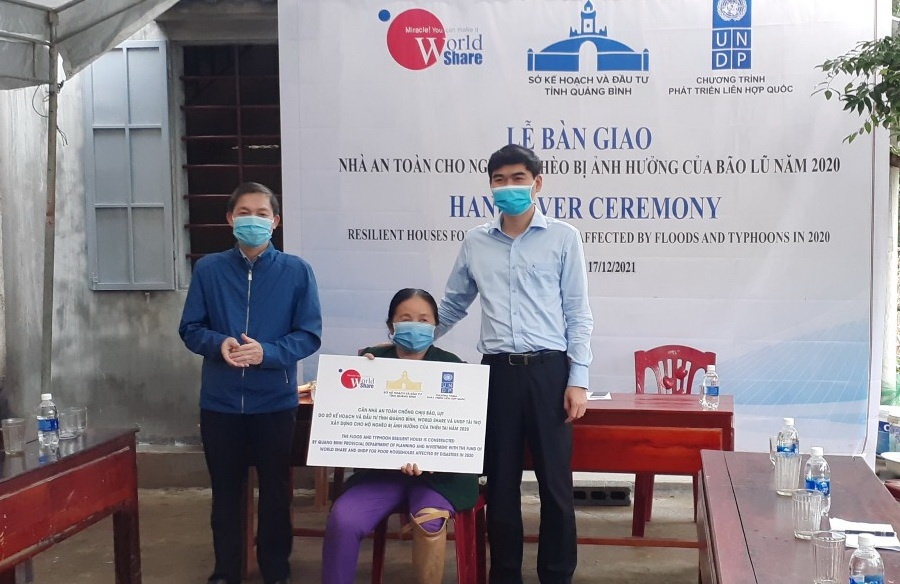Hand-over of flood-resilient houses to Quang Binh residents
 |
| Leaders of Quang Binh Department of Planning and Investment donated a flood-resilient house to Quang Binh resident |
To support local needy households to overcome the adverse consequences of the historic flood in the central region in 2020, the United Nations Development Programme (UNDP), Quang Binh Department of Planning and Investment, and South Korea’s non-governmental organisation World Share have engaged in building 39 food-resilient houses to support needy people in Le Thuy district who incurred heavy losses during tragic typhoons and floods in the region in 2020.
The gratitude houses were donated to seven households in Hong Thuy commune, 13 households in My Thuy commune and 19 households in Son Thuy commune.
| With the support of the Green Climate Fund, UNDP and the Vietnamese government have built more than 800 storm- and- flood resilient houses since 2018 in diverse districts across Quang Binh. |
According to Hoang Duc Thien, deputy director of Quang Binh Department of Planning and Investment, flood-hit people were very happy with the hand-over of solid storm and flood-resilient houses, particularly those who are living in highly disaster-prone areas.
“This support helps people to have stable and resilient homes and raise their living standards. It also contributes to eradicating hunger, reducing poverty, and especially proactively preventing disasters."
We are delighted that World Share has joined hands with the UNDP in this emergency assistance. The houses are a tangible result of our commitment to leave no one behind. The UNDP commits to continuing our resilient housing support for the vulnerable people in Quang Binh province," said Patrick Haverman, UNDP deputy resident representative in Vietnam.
In addition to this project, with the support of the Green Climate Fund, the UNDP, and the Vietnamese government have built more than 800 storm- and- flood resilient houses since 2018 in the districts of Ba Don, Bo Trach, Le Thuy, Quang Ninh, Quang Trach, and Tuyen Hoa in Quang Binh province, enhancing disaster prevention capacity for poor and near-poor households in the area.
What the stars mean:
★ Poor ★ ★ Promising ★★★ Good ★★★★ Very good ★★★★★ Exceptional
Related Contents
Latest News
More News
- Protect what’s next: towards a future free from meningococcal group B disease (December 05, 2025 | 18:00)
- New ILO report offers policy recommendations for disability inclusion (December 04, 2025 | 15:18)
- Maternal job loss may affect children’s mental health, research shows (December 03, 2025 | 19:11)
- Women lead Vietnam’s shift to climate-resilient agriculture (December 03, 2025 | 19:10)
- Experts highlight unpaid care work as key barrier to gender equality (December 03, 2025 | 15:15)
- Opportunities and inequalities for women workers in Vietnam's garment industry (December 03, 2025 | 09:00)
- Vietjet flights carry love to devastated central region (November 28, 2025 | 11:35)
- New initiative to boost the fight against domestic violence (November 26, 2025 | 10:00)
- South Korea funds IOM relief for Vietnam’s typhoon-affected communities (November 24, 2025 | 15:33)
- AI and human-centred values set to shape the future of HR in Vietnam (November 21, 2025 | 18:04)

 Tag:
Tag:


























 Mobile Version
Mobile Version